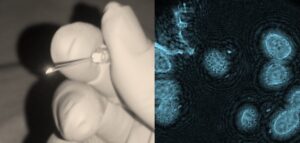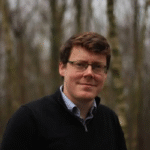Tuesday 11th November 2025, 6.30pm, Sibson Lecture Theatre 3
 Michael Hughes (University of Kent)
Michael Hughes (University of Kent)
Since the 17th century, microscopes have allowed us to peer into the microscopic world. The insights they provided enabled breakthroughs in biology and medicine that have shaped the modern world. Even today, microscopy remains a staple of medical diagnosis: tissue biopsy samples removed from patients are studied by pathologists using microscopes that might seem familiar to Galileo or Malpighi.
Our desire to see smaller and smaller details, and to generate new methods of contrast in images, has led to the development of larger, more complex microscopes that (inevitably) come with an ever-growing price tag. But at the same time, developments in sensors, computing and materials are now allowing us to imagine different kinds of microscopes altogether.
In this talk I will explore how we can build cheaper, smaller, and more portable microscopes that use mathematical calculation, rather than expensive optics, to obtain exquisite images of the microscopic world. I will show ways in which fibre optics can be used to make microscopy probes that are small enough to put inside the body, offering live microscopy views of tissue without the need to take biopsies. We will finish with an outlook for future developments, with new technologies promising needle microscopes that are thinner than a strand of human hair.
 About the speaker
About the speaker
Dr Michael Hughes is a Senior Lecturer in Physics and Astronomy and a member of the Applied Optics Group at the University of Kent. His lab develops new technology for ultra-miniature optical imaging and sensing probes with the potential to open up new applications in medicine and biosciences. He is particularly interested on building cost-effective systems for use in point-of-care and low-resource settings.
The talk is free and open to all. Doors open about half an hour before the talk begins.
Optional registration – if you wish to register, you can do so at the Institute of Physics web pages.
For directions to the lecture theatre, see here.